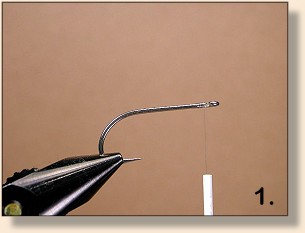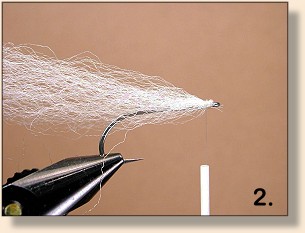
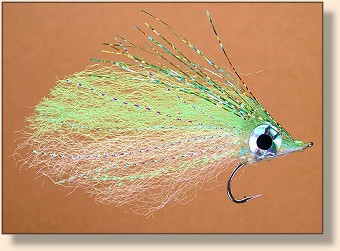 |
|
Spread Fly
|
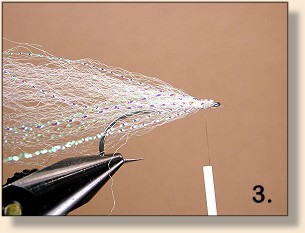
3. Add a few strands of crystal flash or holographic flash.
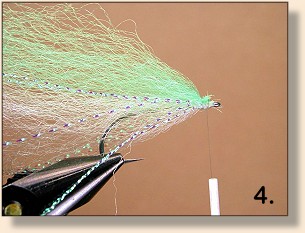 4. Add a second (darker) color of synthetic hair as desired.
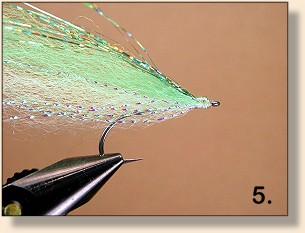 5. Here I added some dark green holographic flash to the back. Trim any loose strands of hair near the eye of the hook and build a nice head. Then, whip finish and trim the thread.
|
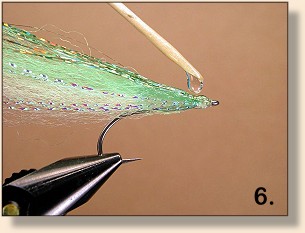
6. Mix up some 5-minute epoxy being careful to keep both
parts of the mix even so it will set properly. A Post-It sheet
works well for this purpose. Apply the epoxy to just the head
part of the fly (as shown), working it thoroughly into the hair.
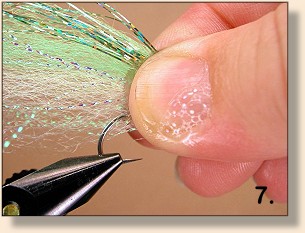 7. When the epoxy starts to get slightly stiff (begins to set), wet your fingers with the Photo-Flo solution and squeeze the fly head firmly. Be careful to keep the hair to the top of the hook so you don't close off the hook gap. You can set the depth of the fly body by adjusting the hair and how tight you squeeze.
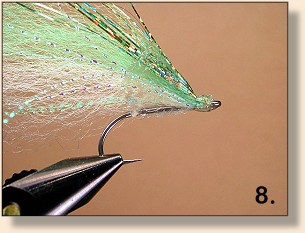 8. Keep squeezing the head until the epoxy gets stiff enough to hold its shape. Your fly should now look something like this.
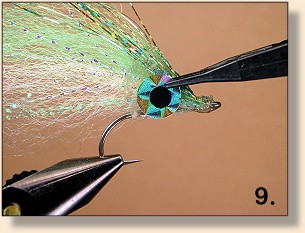 9. Select a pair of prismatic eyes that will fit the head of the fly. I prefer slightly over-sized eyes for most patterns.
|
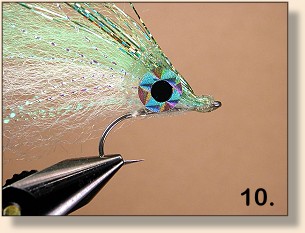
10. Stick the eyes to the sides of the epoxy head.
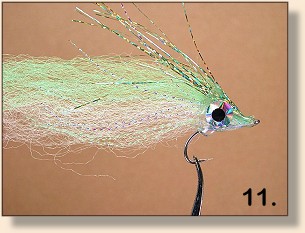 11. Apply a second (thin) coat of epoxy over the eyes and head. Rotate the fly until the epoxy sets to prevent sagging like the sag you see forming here.
|
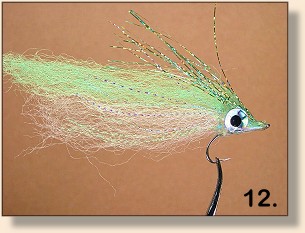
12. Once the epoxy sets and is tack-free, you can trim the body.
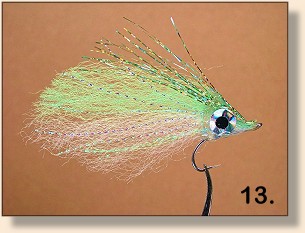 13. Use your scissors to trim the fly to the length and shape desired.
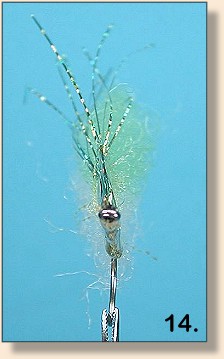 14. From the front your fly should look thin.
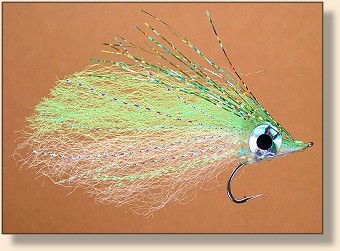
|
|
|
